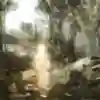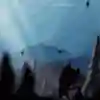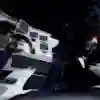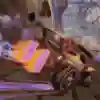Games
Baptism by fire: We chat to Sean Vanaman about his journey from Telltale to Campo Santo.
“You can make a Firewatch in 18 uninterrupted months if you know what you’re doing.”
These are the words of Sean Vanaman, co-founder of Campo Santo – the dev studio responsible for the upcoming indie mystery drama thriller exploration adventure game for PS4 and PC. That may seem overly humble for a game that many are tipping to be one of the year’s most promising, but Vanaman is not doing a disservice to Firewatch at all. Two and a half years ago, neither Campo Santo nor Firewatch existed. The other six months? “Just learning how to work with each other,” he laughs.
Although the game drifted through last year a little under the radar, it has been receiving some well-deserved attention in the last couple of months. But even if you have been keeping tabs on Firewatch, you could be forgiven for not really knowing what it’s supposed to be.
“A semi-inebriated Steve Gaynor [game designer, formerly at Irrational Games, now founder of The Fullbright Company] once described games like Firewatch as, ‘adventure games with systems,’ and I still like that,” says Vanaman when we ask him to categorise Firewatch. “But you’re right – Firewatch doesn’t really fit into a specific genre. Folks expect lots of different things out of it – it’s a story about two people, so often that’d be called a drama in film, but I feel like if it were a movie it’d be a thriller. I think it’s funnier than people expect, too, so... I don’t know!”
In truth, Firewatch is a first-person adventure game, with a huge emphasis on the personal relationship between the two protagonists – fire lookouts Delilah and Henry. But that is grossly underselling everything that makes Firewatch such a unique prospect. In an era where games are becoming more artistic and exploratory than ever before, not conforming to a certain category is of course, no bad thing. Firewatch’s non-conformity isn’t down to an absence of anything, rather, it’s a beautiful melting pot of different ideas and mechanics. Less vanilla, more Neapolitan, if you like ice cream metaphors.
Although you may not know Sean Vanaman by name, we’d venture to say you should be familiar with some of his work. Before leaving to start Campo Santo, Vanaman was working at Telltale Games as the lead writer for The Walking Dead game, which basically means, he wrote one of the finest stories told in gaming this side of the millennium. That’s reason enough to be excited about Firewatch before you’ve even seen a screenshot.
“Telltale was incredibly generous to me in regards to creative opportunities,” says Vanaman of his previous job, “but I found that after The Walking Dead, I got a little too comfortable. Before we started work on The Walking Dead there was a lot of fear – of failure, or of making something crappy despite everyone's hard work. That fear is really motivating, and leaving Telltale to start something new with Jake [Rodkin, Vanaman’s co-writer at Telltale] was really the only thing that created that same discomfort.”
So, Vanaman and Rodkin decided to go it alone and in September 2013, Campo Santo was born in beautiful San Francisco. But they weren’t completely alone. In fact, the talent on show at Campo Santo is remarkable, especially given how freely everyone came together. Vanaman and Rodkin were joined by two more co-founders – Mark of the Ninja lead designer Nels Anderson, and the super-talented Olly Moss who you may know from his awesome gaming prints.
“It was all pretty organic,” says Vanaman about the process of starting Campo Santo. “Jake and I knew we wanted to leave and start our own studio, and make our own games. We chatted with Nels while he was in town and he wanted the same thing we did, and Olly fell for the idea pretty quickly too – we’d been mutual admirers of each other’s work for a while. I think Jake asked him on AIM actually,” he laughs, “that’s the most reliable way to get a sought-after talent to clear his or her dance card for a couple of years.”
“Firewatch is a direct response of all my time and learning from Telltale,” adds Vanaman. “I think it’s a hugely ambitious game from an outside perspective, but from the inside – or at least, inside my head – it’s actually really conservative. After learning so much about all the different things that make games great, I’m sticking to what’s in my wheelhouse with Firewatch – story, dialogue and characters.”
As for the story, the Campo Santo team are keeping all the important details under their hats for the moment, but the basics are thus. Firewatch is set in the forests of Wyoming in 1989, just after the hellish fires that tore through Yellowstone National Park in 1988 for several months, closing the park and nearly destroying it in the process. Both Vanaman and Anderson grew up in Wyoming, so the setting made perfect sense for them. “I realised this might be the only time in my career to be that selfish,” says Vanaman. “I wanted to write about characters that spoke and cared about the things I remember my parents caring about in the '90s. It was the most interesting time to set the story – it made sense.”
The story concerns two fire lookouts – Henry and Delilah – but if you think Firewatch is about putting out blazes, well, you’re dead wrong. The plot circulates around a series of strange events in the forests of Wyoming, but what promises to make Firewatch special is the complex narrative and relationship between Henry and Delilah. Whilst you play as Henry, Delilah’s role as a remote companion on the end of your handheld radio is reminiscent of Atlas from Bioshock, only this time, you have total freedom to talk to her as much or as little as you want. If you find something in the forest, you can choose to report it, or not. You can ask her personal questions and unravel more about their past, or you can purposely ignore her. Such is the depth of Campo Santo’s narrative, every single interaction and dialogue choice – or lack of – that you make will have an impact on the game at large, as well as the intricacies of Henry and Delilah’s relationship.
“I think we were in the studio for at least 40 hours total to record all the dialogue,” says Vanaman. “Interestingly enough, this was the first game I’ve ever written without visual trees, although we do still have a tool to help us visualise the script. The dialogue tree gets really complicated later on – essentially the game constantly works out what the most apt next line of dialogue will be, depending on all your previous choices and actions.”
When both of these characters have no physical embodiment in the game, voice acting becomes an even more crucial component of what Firewatch is trying to achieve. It’s no accident that Vanaman considered Firewatch in a film context earlier – as video games start to tackle more complex social and cultural dynamics, voice acting becomes as important to a game as acting is to a film. Vanaman and his team searched exhaustively to find the right pair for their story, and by the looks of the trailer, they got it spot on with Rich Sommer (Mad Men’s Harry Crane) and Cissy Jones (the voice of Katjaa in The Walking Dead) voicing Henry and Delilah respectively.
“Cissy was chosen before I started writing,” admits Vanaman, “so that was always an easy choice for me, I knew she’d be perfect for the role. But Rich was an interesting one, he was about the fiftieth person we saw. I had a really specific portrait of Henry in my mind before we auditioned anyone, but Rich unlocked this character for me in a totally unexpected way. It was quite surreal, he very much changed my idea of who Henry was, and he made it his. It’s a great thing to learn in regards to finding the right actor and being open to the right choice, even if it’s not what you preconceived.”
So, with the voice acting nailed and the game looking iridescently beautiful, is Firewatch the game that Vanaman had envisioned two years ago? A difficult question to answer, he says. “I think we are all very ‘vision-driven’, especially myself,” says Vanaman. “But I never had this perfect image of the thing in my head, I think that would be terribly boring for everyone else in the team, taking exhaustive stabs at one person’s idea. Instead, I try to say, ‘this area is like this,’ and, ‘it feels like this.’ ‘Here’s what could happen in the game and what happened before the setting,’ and let everyone do their thing. So, Firewatch has far exceeded what we wanted to create in the beginning – but that’s exactly what the process was designed to do.”
When Firewatch arrives on February 9, it will only be arriving on PS4 and PC, and not Xbox One. Even just a couple of years ago, Sony had a poor reputation when it came to working with indies, but Vanaman’s experience has been anything but negative. “This is not just me trying to keep up a good professional relationship by giving you a platitude!” he laughs. “Sony have been really great to us – we really do feel like they care about the game being great, and getting us as much help as possible.” That help hasn’t just been on the development side either – Firewatch was featured at PlayStation’s E3 2015 showcase, as well as at last year’s PlayStation Experience. “From the very beginning they told us, ‘here’s what we can do, and here’s what we can’t do,’ and they’ve been true to their word. It’s been a great professional relationship.”
Despite that, there is some hope for anyone who might be keeping their fingers crossed for Firewatch to arrive on more platforms. Although Campo Santo have nothing in the pipeline at the moment, the devs are committed to making sure that everyone who wants to play Firewatch, can play Firewatch at some point in the future. “We’ll see how the game does at launch,” he says, “and if there’s a desire for it on other platforms then we’ll explore that.”
As for the much nearer future, Campo Santo isn’t in any rush to “spin up something brand new,” as Vanaman puts it. “I’m always kind of ready to start working on another game,” he admits, “but I think we’ll start chipping away at that when the time is right. It won’t be a sequel to Firewatch, this story is done. But I’m very excited to see what we come up with next.”
For more gaming coverage, be sure to follow @RedBullGames on Twitter and like us on Facebook.











